Dirty Tank Top
Angel Gabriel, the Elusive English Galleon Presentation
On Saturday March 6th, University of Maine research associate professor of history and marine sciences, Warren Riess, and his wife, Kathleen, will give a presentation on the Angel Gabriel, an English Galleon that wrecked near Colonial Pemaquid in 1635. This is the elusive vessel that Riess spent many years searching for. The presentation will take place at the Mobius Center on Business Rt. 1 in Damariscotta, Maine beginning at 10am. $5 donation. Public welcome. FMI email sbart@tidewater.net.
Prehistoric stone biface
The Lunt biface (ca. 9,000 years old) recovered by scallop fishermen in Blue Hill Bay, Maine in the 1990s.
Prehistoric Stone Biface
The “Lunt” biface (ca. 9,000 years old) recovered by scallop fishermen in Blue Hill Bay, Maine in the 1990s.
Mount Vernon survey
IMH will partner with the Maryland Historical Trust, the Virginia Department of Historic Resources, the Mount Vernon Ladies Association, and the Lighthouse Archaeological Maritime Program to conduct the first known underwater survey at Mount Vernon. Details are in the attached pdf file.
SHIP schedule, revised
20 – 21 Feb SHIP Md scan & map
27 – 28 Feb ” “
6 Mar – 11 Apr Roper haul, fix, sand and paint
Sat., 13 Mar Crownsville MD Maryland Archaeology Workshop
Fri., 19 Mar Ocean City MD Middle Atlantic Archaeological Conference
17 – 18 Apr Roper launch, sea trials
18 Apr U-1105 deploy buoy
23 Apr – 2 May Mt Vernon scan & map
8 – 9 May SHIP Va recon Virginia creeks
15 – 16 May Roper prepare for Florida trip
Sat., 22 May LAMP 0900 underway for Florida
Thur., 27 May ” arrive St. Augustine, leave Roper there
all June weekends SHIP Va scan & map creeks by small boat
Fri., 2 July LAMP fly or train to St. Augustine
Mon., 5 July ” 0900 underway for Maryland
Sat. 10 July ” arrive Tall Timbers, refuel
11 – 16 July Roper repair and refurbish
17 – 27 July SHIP Va scan & map
28 – 30 July SHIP De to Lewes, map sites en route
31 July – 29 Aug ” scan & map Del. Bay, Lewes, offshore
30 Aug – 12 Sep SHIP Md to Tall Timbers, map sites en route
14 Sep – Dec * ” recon Potomac from Cobb I. to Rt 301
and from Sandy Point to Point Lookout
20 – 21 Nov U-1105 pull buoy for the winter
Whenever: Help MHT map battlefield sites in Chesapeake.
Map wrecks for USMC Base Quantico.
Enter, plot, and reconcile site data for DE, MD, and VA.
* scan Tuesday through Friday, dive and map sites on weekends, boat work on Mondays.
Restoration Plan – Gypsy, 12Feb2010
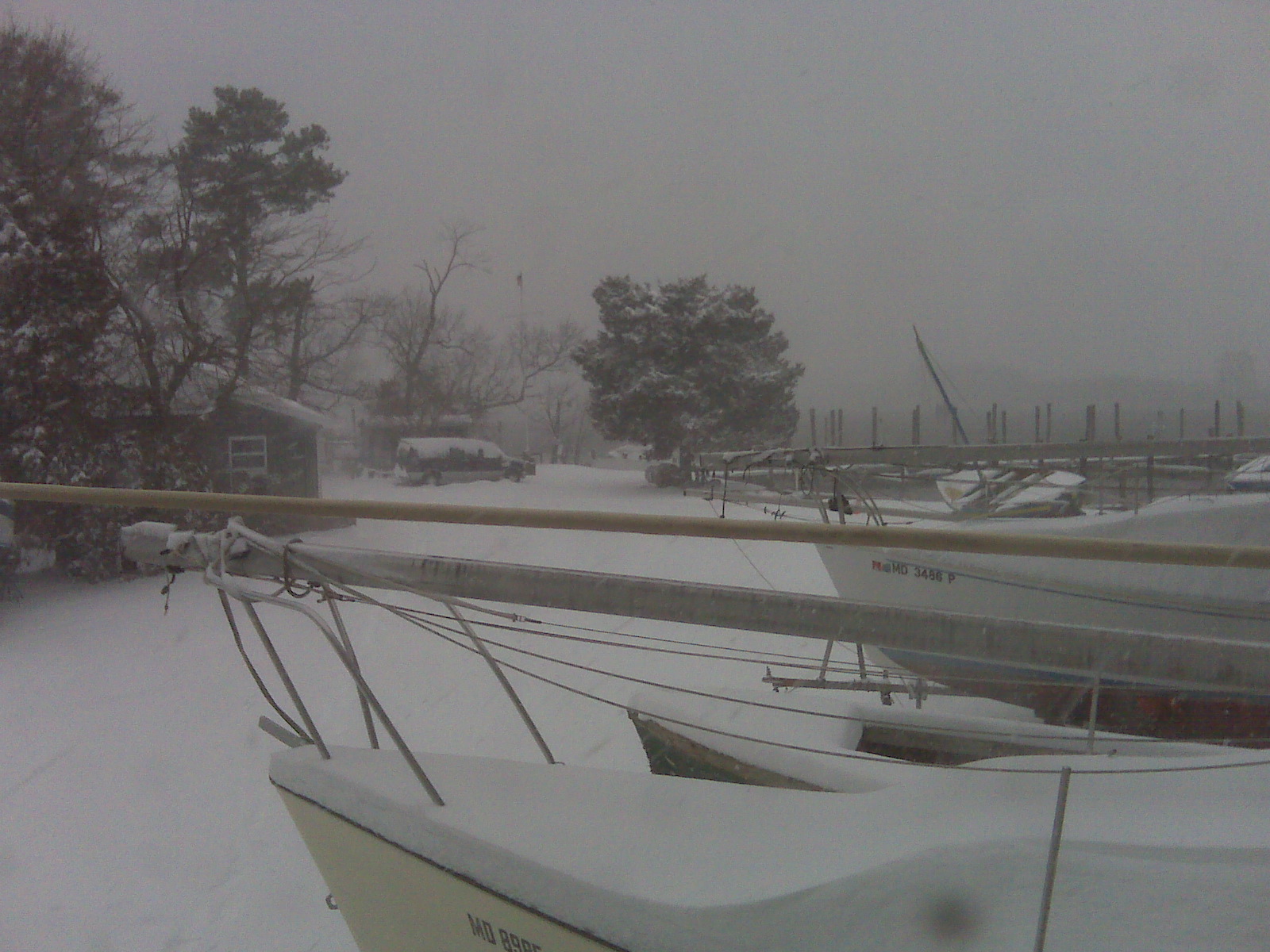 No work on the boat this week– you may have heard we had a touch of “wintry-mix” in these parts. I’ve gotten down to the point where things need to melt before I can go further.
No work on the boat this week– you may have heard we had a touch of “wintry-mix” in these parts. I’ve gotten down to the point where things need to melt before I can go further.
So what does a boat restorer do when he’s not restoring the boat? He thinks about restoring the boat!
I’ve put together four major milestones to work toward: launch her into the water, make her “sleepable”, make her liveaboard-able, and finally operational. Beyond that is the rather nebulous (at this point) goal of long-range cruising (to points south of here, where there’s no snow!) The tasks aren’t in any particular order with each milestone, beyond the order that I dreamt them up.
The first milestone is primarily one of motivation– the sooner she’s in the water, the more I’ll want to work on her. Also, in a slip she’ll have a continuous power supply (to keep the batteries topped up and the pumps running if need be), and she won’t freeze up in the winter. As much. I hope. So before she can go back in the water:
- repair/replace the port prop-shaft; it has pit-corrosion at the stuffing box.
- replace stuffing box packing in the prop-shaft and rudder-post tubes.
- inspect/repair/replace all thru-hull fittings.
- install proper bilge-pumps and wiring.
- install battery charger/inverter.
- sand/paint topsides (or rehab the gel-coat, if that’s an option).
- sand/paint bottom.
- decide on a new name – paint it on the transom.
- drain/inspect/clean fuel and water tanks.
- find/repair all weather leaks.
- install proper shore-power connection for the battery charger.
The second milestone is the ability to spend the weekend comfortably aboard. This allows the sale of our other “sleepable” boat to pay for more boat-wiring. Before we can sleep on her, we need to restore the starboard sleeping compartment at a minumum:
- gut the starboard cabin, saving what brightwork is in good enough condition.
- repanel stbd. cabin bulkheads.
- replace stbd. cabin sole.
- repair/replace stbd. cabin door.
- paint/finish stbd. cabin bulkheads.
- replace/rebuild bunk frames, etc.
- replace bunk cushions/covers.
The third milestone is a biggie– the ability to move onto the boat and join the ranks of the liveaboards. Before we can live aboard:
- gut/repair/replace entire cabin space (similar to the stbd. cabin above).
- install washer-dryer. we’ve found one that would work: http://www.splendide.com/splendide_wd2100xc.htm or something similar.
- repair/replace all galley fixtures.
- repair/replace stove.
- install new refrigerator.
- replace/install new AC wiring harness, including breaker panels, etc.
- replace/install new DC wiring harness (breaker panels, etc.)
- replace/rebuild the aft deck hatch covers.
- repair/replace all head fixtures, and install a proper holding tank and shower sump.
- repair/replace water system – fresh-water tanks and pump, and allow shore-water hookup.
- install a hot-water solution – either a new hot-water heater or an on demand (diesel?) hot water system.
And finally before we can take her out of her slip under her own power:
- replace all engine room hoses.
- install full-size house battery bank.
- install starter battery bank.
- get engines running- new alternators and starters.
- get generator running.
- acquire proper ground-tackle including repair/replace the windlass.
- install VHF radios and other electronics (GPS, chartplotter, autopilot, etc.).
- install Coast Guard required equipment (PFDs, flares, etc.)
- repair/replace navigation lights.
- repair/replace salon helm and flying bridge controls.
And before we can cruise anywhere far away:
- install new mast/rigging.
- acquire sails.
- wind-generator?
- solar panels?
- learn how to sail?? 😉
So there it is– pretty short list, eh?
Fair winds– and if you’re on the east coast this week: remember to lift with your legs!
Kirk
Chesapeake Bay Magazine
“‘Tis not a fit night out for man nor beast!” – Gypsy, 04Feb2010
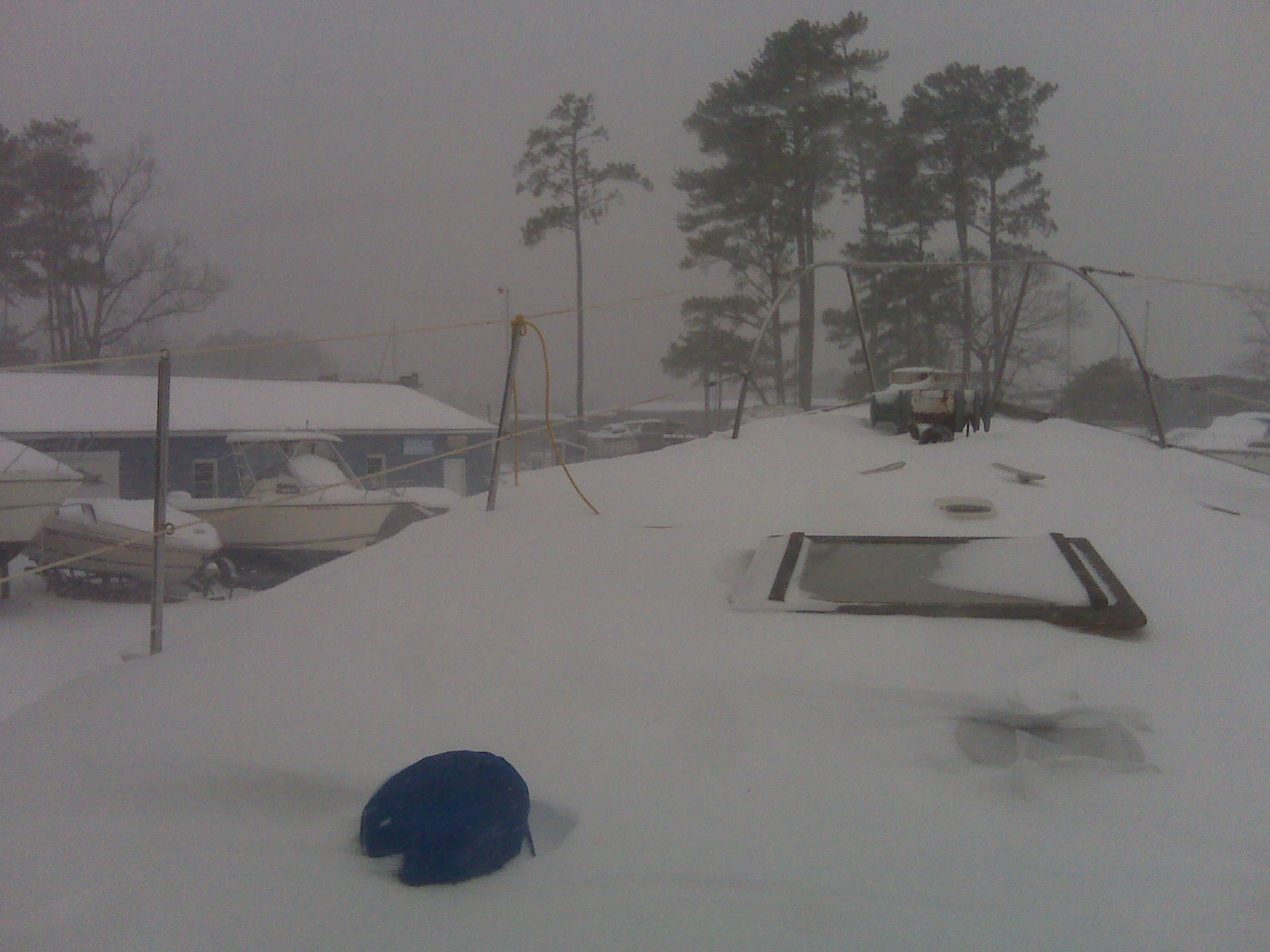 The beautiful weather last weekend made it an absolute joy to work on the boat… NOT! More like an scene from Ice Station Zebra. By Sunday morning, we had almost a foot of snow in the boatyard, with 2 foot drifts here and there. True to form, they’re predicting a second foot-plus snowfall for this coming weekend. More fun!
The beautiful weather last weekend made it an absolute joy to work on the boat… NOT! More like an scene from Ice Station Zebra. By Sunday morning, we had almost a foot of snow in the boatyard, with 2 foot drifts here and there. True to form, they’re predicting a second foot-plus snowfall for this coming weekend. More fun!
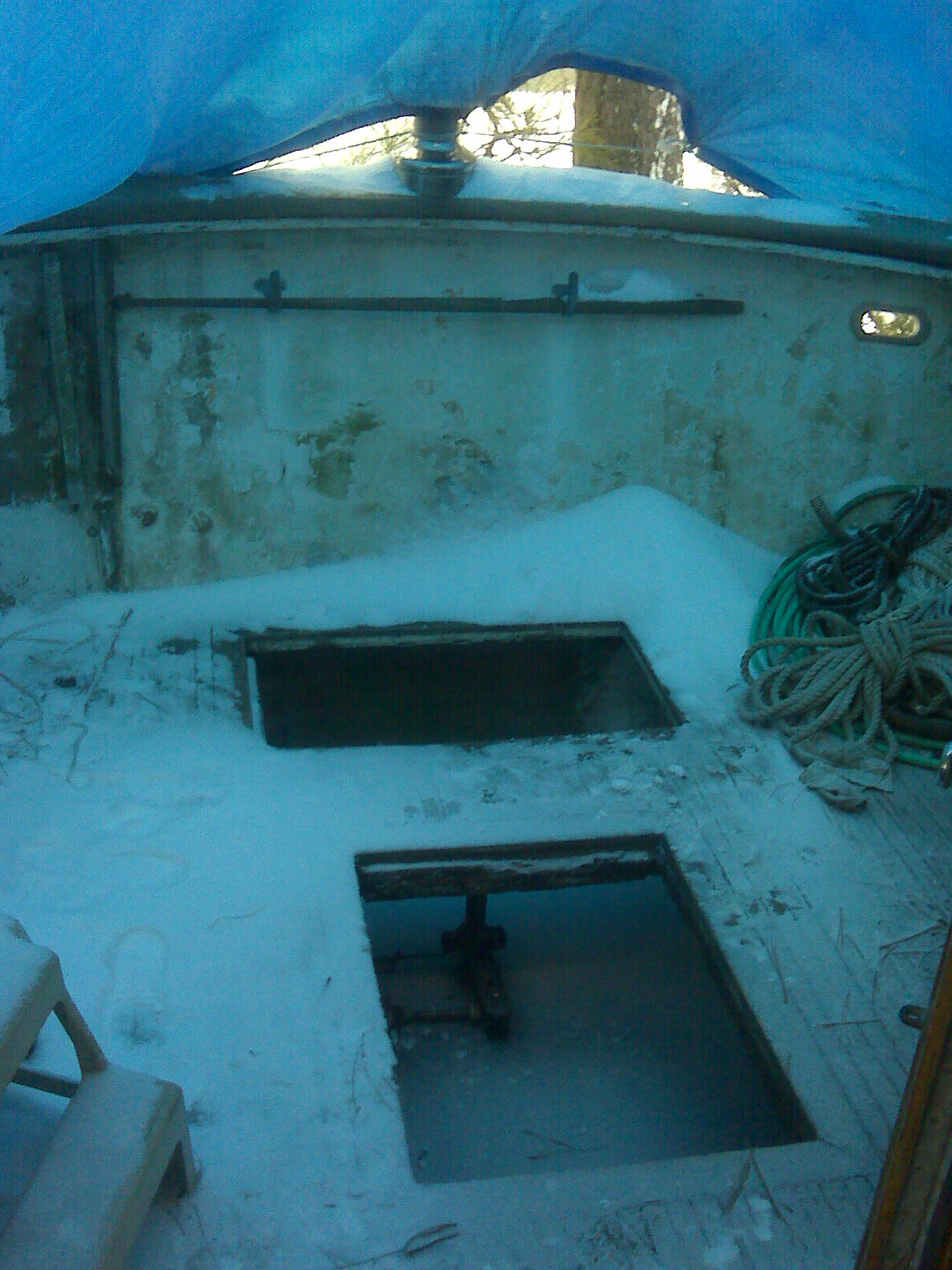 I found the aft hold filled with solid ice– somewhere down in there is a bilge-pump. Not a good idea to try to run ’em when they’re embedded in ice, so it’s a perfect time to re-run the wiring and install the fused switches. They’re done (short of mounting the panel), but can’t be tested until the ice melts.
I found the aft hold filled with solid ice– somewhere down in there is a bilge-pump. Not a good idea to try to run ’em when they’re embedded in ice, so it’s a perfect time to re-run the wiring and install the fused switches. They’re done (short of mounting the panel), but can’t be tested until the ice melts.
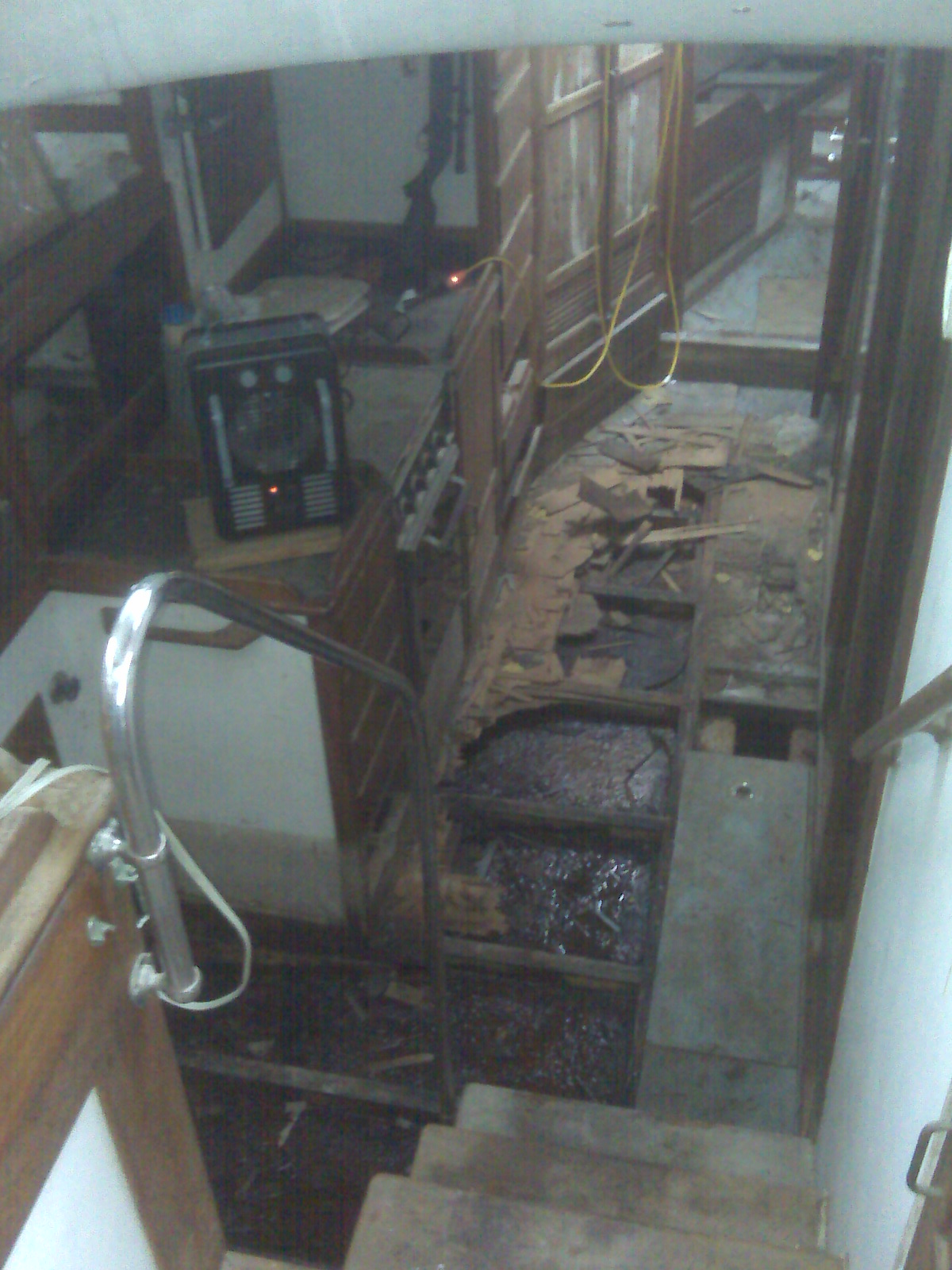 The ice standing on the tops of the fuel tanks below the rotted cabin-sole also prevents me from cleaning that out– the splinters of old plywood are embedded in it. Eventually I hope to find/clean out/install limber-holes in the deck supports to let any water standing on the tanks to drain into the “slot” between them, where the forward pump is. Once she’s afloat, the motion of the ocean should help that along. You can see the “slot” in this picture at the bottom of the companionway stairs, mostly covered by a rotted, removable cover. The space-heater took the edge off the cold, but the snow I tracked in on the salon floor never melted. Draw your own conclusions.
The ice standing on the tops of the fuel tanks below the rotted cabin-sole also prevents me from cleaning that out– the splinters of old plywood are embedded in it. Eventually I hope to find/clean out/install limber-holes in the deck supports to let any water standing on the tanks to drain into the “slot” between them, where the forward pump is. Once she’s afloat, the motion of the ocean should help that along. You can see the “slot” in this picture at the bottom of the companionway stairs, mostly covered by a rotted, removable cover. The space-heater took the edge off the cold, but the snow I tracked in on the salon floor never melted. Draw your own conclusions.
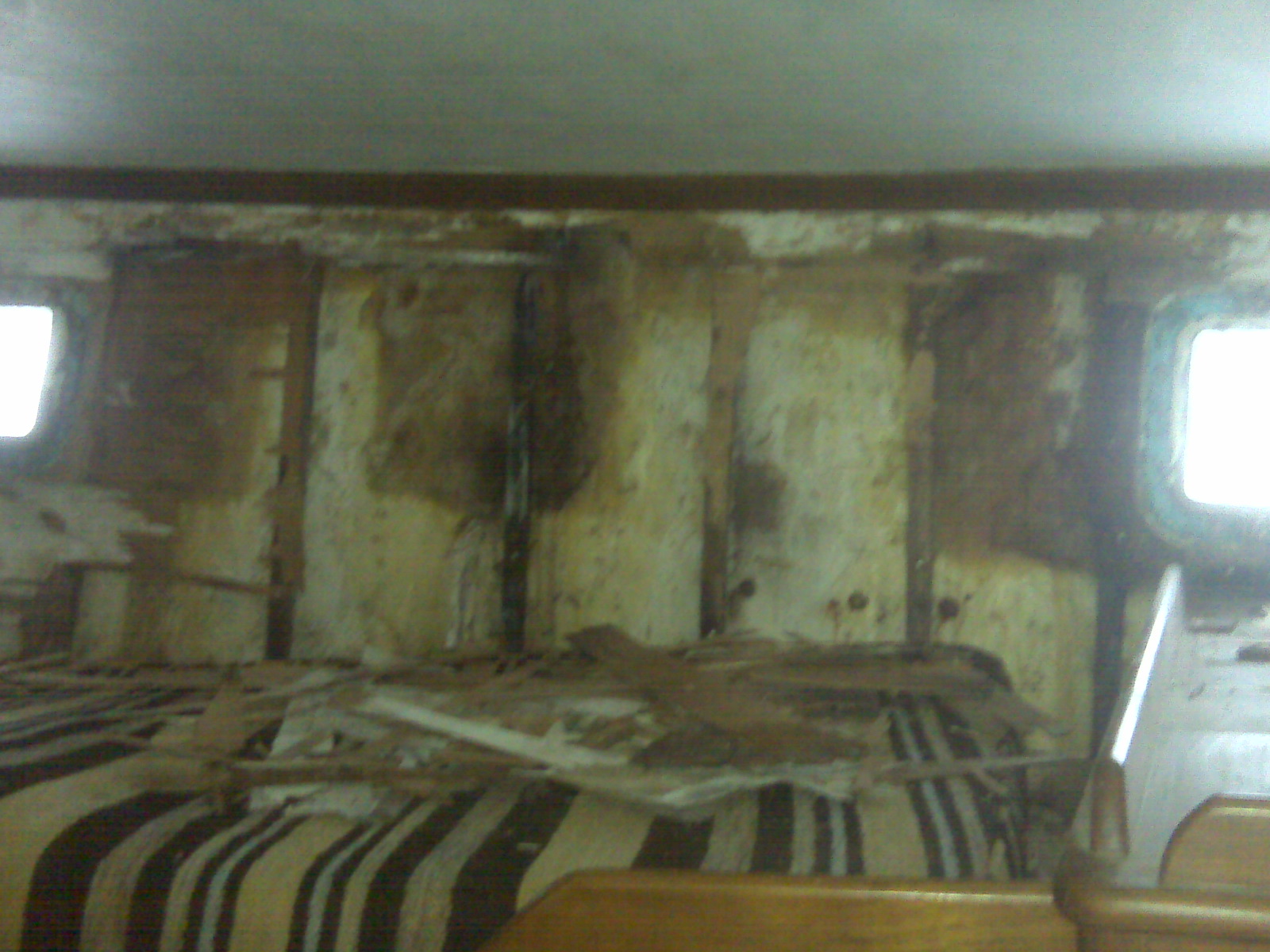 Here’s a shot of the worst weather leak– the water runs in between the deck and the hull. The plywood bulkheads are completely rotted away and the fiberglass is discolored, but still solid. I’m continually amazed at how good condition the structural parts of this boat remain. The frames along the hull are solid as ever, as are the deck supports, etc. everywhere else. Only the cosmetic bits have rotted over the years.
Here’s a shot of the worst weather leak– the water runs in between the deck and the hull. The plywood bulkheads are completely rotted away and the fiberglass is discolored, but still solid. I’m continually amazed at how good condition the structural parts of this boat remain. The frames along the hull are solid as ever, as are the deck supports, etc. everywhere else. Only the cosmetic bits have rotted over the years.
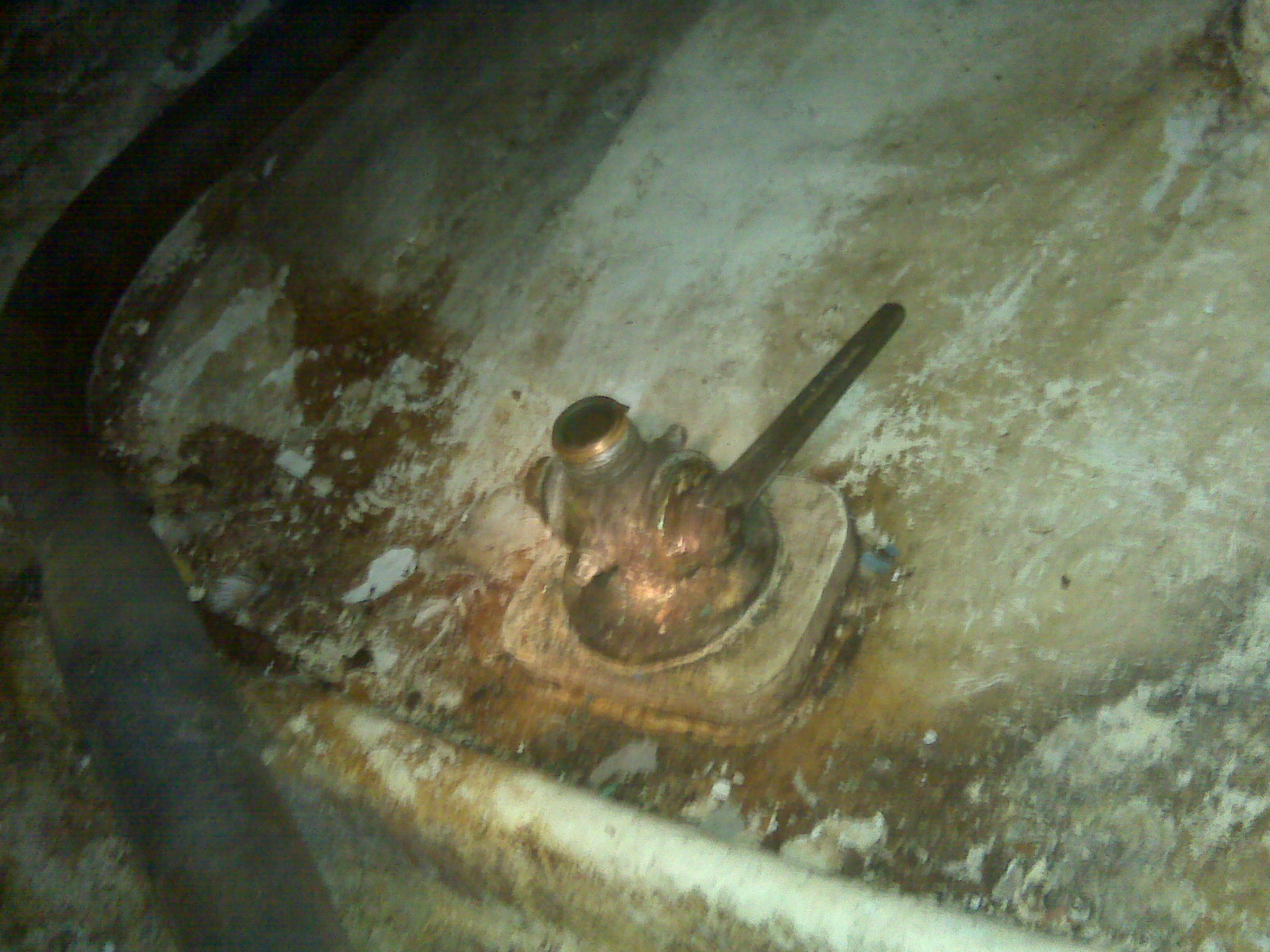 Before the cold set in, I had been working on the thru-hulls and sea-cocks. Here’s a shot of an original engine raw-water intake. This one was in good shape, only needing to be disassembled, cleaned, lubricated and put back together. Another one forward, which had been connected to some less-than-marine-grade plumbing (one tee-fitting was so corroded it fell to pieces when I put a wrench on it) had to be replaced.
Before the cold set in, I had been working on the thru-hulls and sea-cocks. Here’s a shot of an original engine raw-water intake. This one was in good shape, only needing to be disassembled, cleaned, lubricated and put back together. Another one forward, which had been connected to some less-than-marine-grade plumbing (one tee-fitting was so corroded it fell to pieces when I put a wrench on it) had to be replaced.
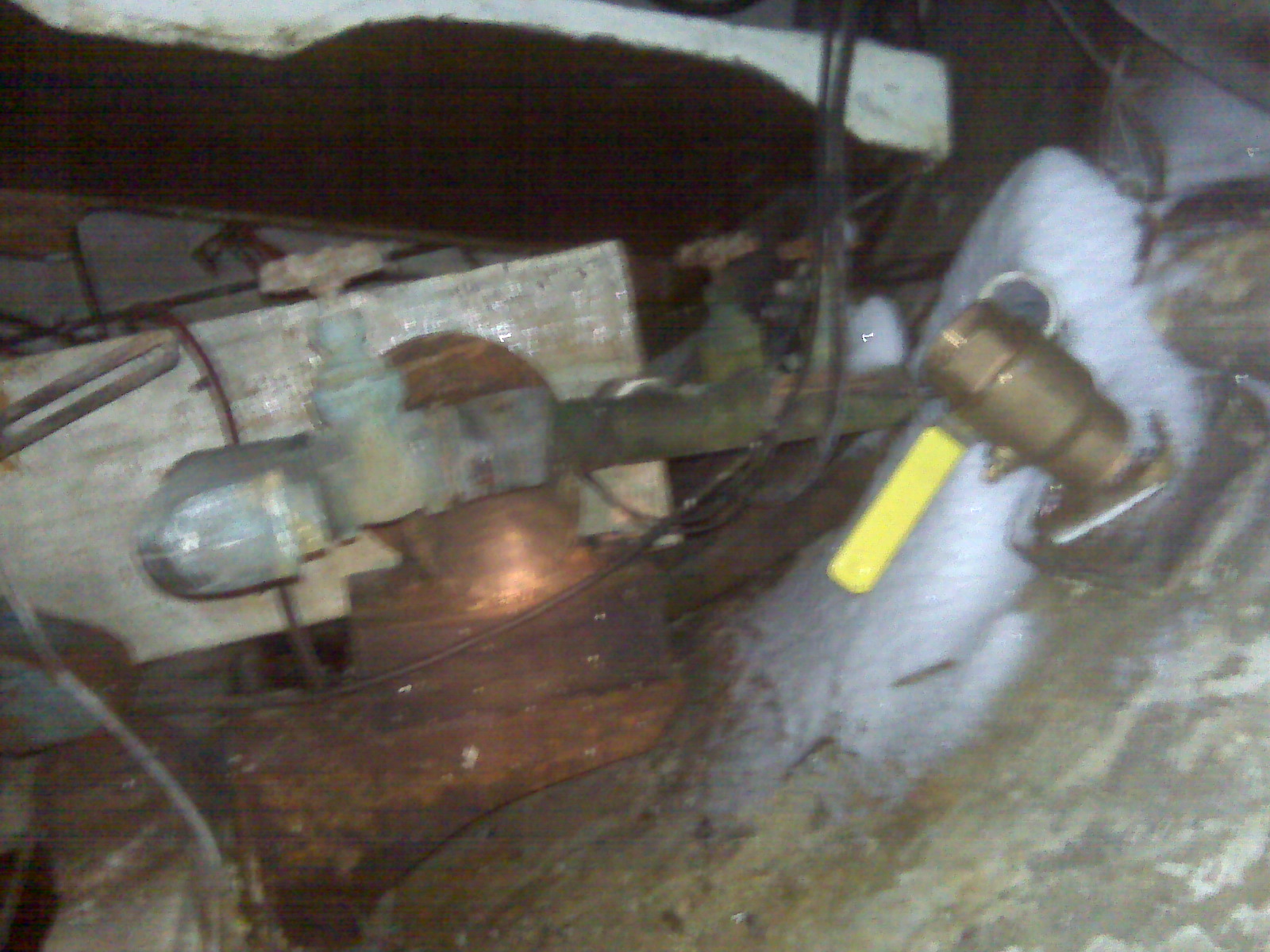 Here’s the new one (with the yellow handle). Somewhere above it some air (carrying blowing snow) is coming in, probably from a disconnected deck-scupper. You can see the remains of some of the old plumbing on the left. Sorry for the picture quality, but low light levels on a cell-phone camera, with shaky frozen hands…
Here’s the new one (with the yellow handle). Somewhere above it some air (carrying blowing snow) is coming in, probably from a disconnected deck-scupper. You can see the remains of some of the old plumbing on the left. Sorry for the picture quality, but low light levels on a cell-phone camera, with shaky frozen hands…
I heard from the original boatyard that built this boat this week– it’s confirmed to be a 1971 Ta Chiao CT-41 motorsailer. The chairman of the company remembered building her with “extremely solid construction.” Apparently, they only built two of this model. I wonder where the other one is? They asked for more pictures to maybe discover the original designer and perhaps other information.
Stay warm!
–Kirk
